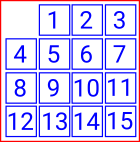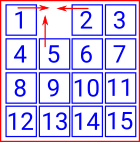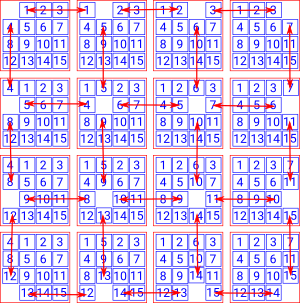There used to be a puzzle, sometimes called the 15 puzzle, consisting of 15 sliding plastic tiles in a 4 by 4 frame. There is only one space without a tile, so the only moves possible are to slide the adjacent tiles into that space. The tiles have letters or numbers on them and the goal is to get them in a certain order. |
 |
So for the first move, in this starting position, there are only 2 moves possible:
Say we move tile 1: |
 |
Now there are 3 moves possible:
|
 |
This example illustrates the different ways of defining the groupoid:
|
 |
|
 |
So we could specify the state of the game by:
- The starting position.
- Together with the sequence of positions of the holes.
Since all arrows are reversible we can always get back to a previous state by retracing a path back. However, if we start with a hole in a particular place and then follow a circular path (for the hole) so the hole ends up in the same place the state (position of tiles) may change so this is not equal to Id.
